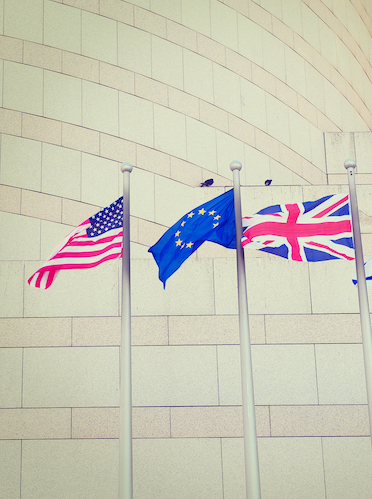“U.S. courts have made clear that mere plausibility is not the test for enablement, finding that patentees could otherwise obtain patent rights to purported inventions consisting of little more than respectable guesses as to the likelihood of their success.”
 Recent cases in the European Patent Office (EPO), the UK, and United States illustrate substantive differences between these jurisdictions as they continue to develop their inventive step/nonobviousness frameworks. In particular, the EPO and UK have recently provided guidance on a concept known as “plausibility,” i.e., whether the scope of the patent must be justified by the patentee’s technical contribution to the art in solving an identified problem. “If it is not plausible that the invention solves any technical problem then the patentee has made no technical contribution and the invention does not involve an inventive step.” Sandoz Limited v. Bristol-Meyers Squibb Holdings [2023] EWCA Civ 472. That standard, however, is quite dissimilar from the United States’ statutory standard of whether “the differences between the claimed invention and the prior art are such that the claimed invention as a whole would have been obvious…” 35 U.S.C. §103; see Graham v. John Deere, 383 U.S. 1 (1966).
Recent cases in the European Patent Office (EPO), the UK, and United States illustrate substantive differences between these jurisdictions as they continue to develop their inventive step/nonobviousness frameworks. In particular, the EPO and UK have recently provided guidance on a concept known as “plausibility,” i.e., whether the scope of the patent must be justified by the patentee’s technical contribution to the art in solving an identified problem. “If it is not plausible that the invention solves any technical problem then the patentee has made no technical contribution and the invention does not involve an inventive step.” Sandoz Limited v. Bristol-Meyers Squibb Holdings [2023] EWCA Civ 472. That standard, however, is quite dissimilar from the United States’ statutory standard of whether “the differences between the claimed invention and the prior art are such that the claimed invention as a whole would have been obvious…” 35 U.S.C. §103; see Graham v. John Deere, 383 U.S. 1 (1966).
Both standards try to ask the fundamental question of whether the invention is inventive. They leave open the issue, however, of whether they can be harmonized, or even lead to the same result, where one focuses on the “inventive concept” and the “problem” that is solved in the specification overall, while the other compares the claims to the art without trying to identify a technical problem or its solution.
EPO
The EPO’s Enlarged Board of Appeal (EBA) addressed plausibility in case G2/21. The claimed invention was directed to mixtures of thiamethoxam and other claimed compounds, which produced an insecticidal with an activity greater than the ingredient’s individual activities due to a claimed synergistic effect. The EPO determined that the presence of the claimed synergy was a matter of inventive step, rather than sufficiency of the disclosure of the claimed invention. (Sufficiency is EPO’s counterpart to the United States’ enablement requirement, and “inventive step” asks whether an invention, “having regard to the state of the art, is not obvious to a person skilled in the art.” European Patent Convention (EPC), Articles 52, 56; see UK Patents Act 1997, §§1(1)(b), 3; see also TRIPS, Article 27.1 and Note 5.) The issue before the EPO was that the G2/21 patentee sought to rely on test data (D21) from after the application’s publication to support the claimed synergistic effect, and so the inventive step assessment hinged on whether D21 test data could be taken into consideration.
The EPO’s Boards of Appeal sought guidance from the EBA on whether post-published data may be considered when determining inventive step. The EBA looked at two possible standards. The first would reject post-published evidence where the application as filed lacked enough support to make it at least plausible that a solution had been found to the problem the inventor asserted was solved by the invention (the so called “ab initio plausibility”). The second approach would reject post-published evidence unless the skilled person would have no reason to consider the disclosed solution implausible (so called “ab initio implausibility”).
The EBA first held that evidence supporting inventive step may not be disregarded solely on the ground that such evidence had not been public before the patent’s filing date. In doing so, the EBA confirmed that “plausibility” is not a distinctly separate condition of patentability, but a criterion for showing the reliance on a purported technical effect.
The EBA then reconciled the two possible standards (i.e., ab initio plausibility and ab initio implausibility). It held that a technical effect may be relied on for inventive step if the skilled person, having the common general knowledge in mind and based on the application as originally filed, would derive said effect as being encompassed by the technical teaching and embodied by the same originally disclosed invention. In other words, a technical effect may be relied upon if the skilled person would derive that technical effect from the application’s teachings.
Although not explicitly stated by the EBA, it appears that post-published evidence of a technical effect may be taken into consideration if the technical effect would have been so derived. That understanding is supported by the Boards of Appeal’s subsequent oral proceedings, which ultimately found that “D21 could be relied upon … and in view of this an inventive step could be acknowledged.” Minutes of the July 28, 2023, Oral Proceedings (T0116/18-3.3.02). Armed with the EBA’s guidance, the Board of Appeal found the application met the inventive step standard based on the post-published test data demonstrating the claimed synergistic effect. As such, at the EPO, an inventive step, and in particular plausibility, may be established by post-published test data.
UK
The UK similarly requires that plausibility be considered when determining whether a claimed invention involves an inventive step. It did so in Sandoz, the first time the Court of Appeal of England and Wales considered the EBA’s G2/21 decision.
Claim 1 of the asserted patent in Sandoz was directed to a single chemical compound called apixaban. Sandoz argued that the patent lacked any inventive step because the patent did not make it plausible that apixaban would have useful inhibitory activity. Recognizing that the concept of plausibility originated as a response to overbroad claims, in particular claims to whole classes of compounds, the Court of Appeal nevertheless found that the principles underlying plausibility are as applicable to claims covering single chemical compound as to classes of compounds. Accordingly, for a claim to a single chemical compound to be patentable, the application (not the issued patent) must make it plausible, in light of the skilled person’s common general knowledge, that the compound has the asserted utility. That requirement applies, according to the Court of Appeal, even where the claim is to the compound and the assertion of utility is found only in the application’s specification— there is no invention in merely identifying a new chemical compound; invention requires identifying its utility.
Contrary to the EBA, the UK court found that the two plausibility standards articulated in G2/21 cannot be reconciled because the two approaches do not necessarily produce the same outcome. The Court of Appeal instead found that the “ab initio plausibility” test governs, although it considered that the harmonized approach adopted by the EBA is, as a matter of substance, closer to this test than the alternative “ab initio implausibility” test.
Concerning post-published data, the Court of Appeal, consistent with the UK’s Supreme Court in Warner-Lambert Co LLC v Generics (UK) Ltd [2018] UKSC 56, held that subsequent data cannot be a substitute for sufficient disclosure in the specification. Thus, absent further evidence (for example, the specification disclosing results from testing apixaban, or a theory based on apixaban’s structure), disclosure of the claimed compound’s structure alone did not provide a reasonable prospect that apixaban had the asserted inhibitory activity. The Court of Appeal thus upheld the lower court’s finding that the patent lacked inventive step.
United States
Unlike the EPO and UK, the United States’ nonobviousness standard does not feature any “plausibility” requirement. That may be because of fundamental differences between the concepts of inventive step and nonobviousness. The EPO’s and UK’s plausibility tests are meant to determine inventiveness by, unlike the United States, looking at whether the invention “solved” a specified problem.
Even in other settings, the Federal Circuit has rejected arguments involving plausibility. For example, U.S. courts have made clear that mere plausibility is not the test for enablement, finding that patentees could otherwise obtain patent rights to purported inventions consisting of little more than respectable guesses as to the likelihood of their success: “[w]hen one of the guesses later proved true, the ‘inventor’ would be rewarded the spoils instead of the party who demonstrated that the method actually worked.” Rasmusson v. SmithKline Beecham Corp., 413 F.3d 1318 (Fed. Cir. 2005). (This is unlike, for example, the short-lived “promise of the patent” test in Canada, where courts required that all uses ‘promised’ in a patent’s specification be demonstrated or soundly predicted as of the application’s filing date. AstraZeneca v. Apotex, 2017 SCC 36 [Esomeprazole SCC] (overruling the doctrine).).
Another possible reason U.S. courts have not adopted a plausibility test may be because, unlike the EPO and UK, utility arises in the enablement context, rather than nonobviousness. Accordingly, observing that a skilled person could make and use the invention years after the patent’s filing bears little on the enablement inquiry. Trustees of Boston Univ. v. Everlight Elecs. Co., 896 F.3d 1357, 1364 (Fed. Cir. 2018). Moreover, enablement deficiencies in a patent’s specification cannot be cured by looking to the knowledge of those skilled in the art at the time of the invention. Enzo Life Scis., Inc. v. Roche Molecular Sys., Inc., 928 F.3d 1340, 1348 (Fed. Cir. 2019).
Notably, the U.S. Supreme Court has emphasized an expansive and flexible approach to the obviousness question. See, e.g., KSR Int’l Co. v. Teleflex Inc., 550 U.S. 398 (2007). More recently, the Court held in Amgen v. Sanofi that a specification need not always “describe with particularity how to make and use every single embodiment within a claimed class,” and “it may suffice to give an example (or a few examples) if the specification also discloses some general quality running through the class that gives it a peculiar fitness for the particular purpose.” Amgen Inc. v. Sanofi, 143 S. Ct. 1243 (2023). And in some cases, the Court explained, “disclosing that general quality may reliably enable a person skilled in the art to make and use all of what is claimed, not merely a subset.” However, the court cautioned that a “specification must enable a person skilled in the art to make and use the entire class” of what is claimed and not merely advise further experimentation. “[I]f an inventor claims a lot, but enables only a little, the public does not receive its benefit of the [patent] bargain.”
As such, with the United States Supreme Court’s continued rejection of rigid nonobviousness frameworks, and following the EPO and UK continued plausibility developments, there is an obvious harmonization question: will, one day, plausibility find its way across the “pond”?
Image Source: Deposit Photos
Author: ggkuna
Image ID: 46837829

![[IPWatchdog Logo]](https://ipwatchdog.com/wp-content/themes/IPWatchdog%20-%202023/assets/images/temp/logo-small@2x.png)


![[Advertisement]](https://ipwatchdog.com/wp-content/uploads/2024/04/UnitedLex-May-2-2024-sidebar-700x500-1.jpg)
![[Advertisement]](https://ipwatchdog.com/wp-content/uploads/2024/04/Artificial-Intelligence-2024-REPLAY-sidebar-700x500-corrected.jpg)
![[Advertisement]](https://ipwatchdog.com/wp-content/uploads/2024/04/Patent-Litigation-Masters-2024-sidebar-700x500-1.jpg)

![[Advertisement]](https://ipwatchdog.com/wp-content/uploads/2021/12/WEBINAR-336-x-280-px.png)
![[Advertisement]](https://ipwatchdog.com/wp-content/uploads/2021/12/2021-Patent-Practice-on-Demand-recorded-Feb-2021-336-x-280.jpg)
![[Advertisement]](https://ipwatchdog.com/wp-content/uploads/2021/12/Ad-4-The-Invent-Patent-System™.png)






Join the Discussion
4 comments so far.
Anon
October 6, 2023 10:09 amB,
Respectfully, my point (actually, Judge Rich’s point) is expressly that our non-obviousness is NOT “inventive.”
This cannot be stressed enough, as “inventive” (and its dozens of variants such as “Gist of the Invention”) are part and parcel of the (now) 35 USC 101 debacle — and an express point of the Act of 1952.
Congress had ‘allowed’ the Courts decades of ‘leeway’ to interpret “inventive,” and the Courts turned that into the (in)famous “The only valid patent is one that has not yet appeared before us” and “Flash of Genius” mantras.
The Act of 1952 expressly chose NOT to focus on “inventive .”
B
October 5, 2023 10:28 pm@ Anon “The US system expressly did NOT attempt to deal with ‘inventive,’ so the supposition . . . ”
By “inventive,” they mean nonobvious. The EPO isn’t as stupid as our S.Ct. or as sleazy as our CAFC.
B
October 5, 2023 10:24 pm“whether the scope of the patent must be justified by the patentee’s technical contribution to the art in solving an identified problem”
Not to be disagreeable, but this is more 112, not 103. Just had a S.Ct. decision on this
Anon
October 4, 2023 03:43 pmOne – not so small – caveat:
The US system expressly did NOT attempt to deal with “inventive,” so the supposition of, “Both standards try to ask the fundamental question of whether the invention is inventive.” is simply not correct.
Go back and review the Act of 1952, and Judge Rich’s writings on the topic.